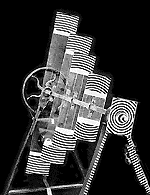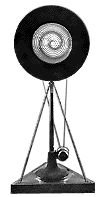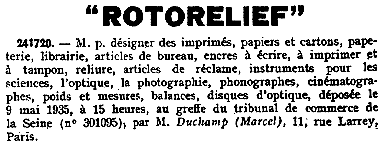





Maybe Duchamp hoped to realize the prophecy of Apollinaire that he was foreordained to 'be the conciliator of art with people'. He rented a stand at the Concours Lépine, an annual fair for fancy domestic gadgets and general inventions, and made a display with his rotoreliefs.
People were very interested, but nobody purchased any of the cardboard rotoreliefs: some rotoreliefs were for sale, but there's reason to doubt this intention to be anything more than just another example of the inquisitive mind of Marcel Duchamp.
The rotorelief as an excursion to a non museal approach of the creative process however, is very real. Of course Duchamp would humorously 'tone down' his act - as a result of his moderate (often referred to as nihilistic) philosophy of life - but he wouldn't have made this 'invention' if he didn't take it very seriously as a creative process. (instead he could have spend many hours of 'existential' breathing and playing chess games)
The 'déposée' (deposit) of the invention at the 'Tribunal de commerce de la Seine' in 1935 has to be - almost beyond doubt - viewed in the same way: as an attempt to a non museal creative process.




